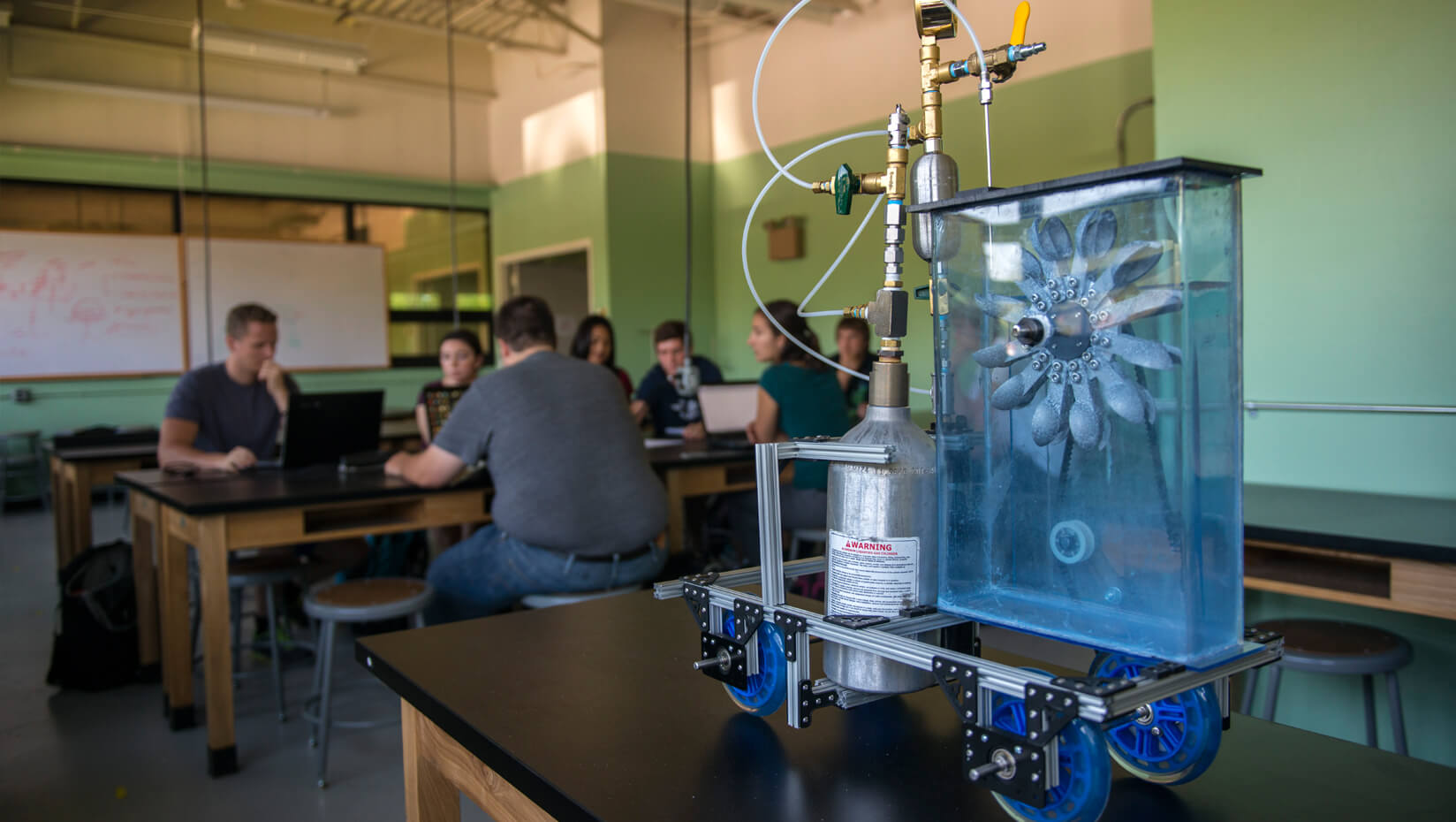
Powered by science: UMaine bioengineering students head to Chem-E-Car Competition
The University of Maine Biocar Team is hitting the road November 8–13 to participate in the 2015 National Chem-E-Car competition at the University of Utah.
The team — composed of 10 bioengineering students — will cheer for its car named Babe as it races against 36 unique chemically powered vehicles designed by teams from around the world.
The competition is part of the American Institute of Chemical Engineer’s annual student conference and is aimed to engage college students in designing and constructing a car powered by a chemical energy source. The car must safely carry a specified load over a given distance before stopping.
UMaine earned a trip to nationals after placing fourth in the regional competition at Northeastern University in the spring. The top three teams were eligible to compete in the next round, but because two of the three finalists were from the same institution, UMaine advanced to the finals.
“We were a little surprised — but definitely happy,” says Riley O’Donnell, a fourth-year bioengineering student at UMaine.
O’Donnell first heard about the Chem-E-Car competition from his bioengineering professor, Michael Mason, who suggested the project to students needing to fulfill a technical credit. Students who don’t specialize in bioengineering also are welcome to participate by joining the UMaine Biocar Club.
The chemistry behind the operation of the car involves the decomposition of hydrogen peroxide into oxygen and water, with a little help from an enzyme.
The reaction releases oxygen gas that pressurizes the system, which displaces the water, causing the wheels to move. Altering the amount of reactant in the reaction changes the pressure in the reaction vessel, which allows the team to control how far the car travels.
When all the pressure is released, the car will stop.
The design for the car began three years ago and has been improved each semester to maximize its design and efficiency.
The competition increases awareness of the chemical engineering discipline among the public, industry leaders, educators and students.
The most rewarding part, says O’Donnell, is learning to work as a team.
“It takes a lot of teamwork to come up with a plan because there are so many different ideas. It’s an independent study, so you are either working by yourself or with your fellow students. It’s a lot of coordinating and idea-throwing, but it’s a great environment.”
Hailing from Brunswick, Maine, O’Donnell expects to graduate in May 2016 and hopes to pursue a career in tissue engineering or prosthetics.
Team members include:
- Riley O’Donnell, Brunswick, Maine
- Abigail Wessels, Morrill, Maine
- Ben Brewer, Corinth, Maine
- Kent Reichel, Hampden, Maine
- James Alley, Hampden, Maine
- Sony Manandhar, Kathmandu, Nepal
- Dayna Roy, North Andover, Massachusetts
- Christine Reynolds, Portland, Maine
- Stephan Larose, Cape Elizabeth, Maine
- Erik Byrne, Kittery, Maine
- Marie Doe, Kennebunkport, Maine
- Clay White, Brookton, Maine
- Ben Meservey, Litchfield, Maine
Contact: Amanda Clark, 207.581.3721
